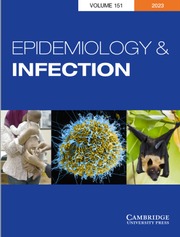Article contents
On the Bacteriology of Normal Organs1
Published online by Cambridge University Press: 15 May 2009
Extract
The question of the presence or absence of micro-organisms in the normal organs of the body has occupied the attention of numerous observers; yet, despite the fact that its solution is not accompanied by any great difficulties, the results of experimentation have been strangely at variance. For instance, Meissner stated that no bacteria capable of development are present in the living tissues of the healthy animal, while Zweifel (1885) expressed the opposite opinion, namely, that human organs habitually contain germs, that these germs, however, are anaerobic in character, their capability of development being limited by the amount of oxygen present in the blood stream.
- Type
- Research Article
- Information
- Copyright
- Copyright © Cambridge University Press 1901
Footnotes
The following paper is an abstract of a contribution to the meeting of the Association of American Physicians, held in Washington, May, 1900.
References
2 Zweifel, , Ref. Baumgarten's Jahresbericht, 1885, Vol. i. p. 168.Google Scholar
3 Hauser, ibid., 1885, Vol. i. p. 166.
4 Welch, , American Journal of Medical Sciences, 1891, Vol. ci. p. 439.CrossRefGoogle Scholar
1 Neisser, , Zeitschr. f. Hygiene u. Infektionskr., 1896, Vol. xxii. p. 12.Google Scholar
2 Opitz, ibid., 1898, Vol. xxix. p. 505.
1 Adami, , British Med. Journ., 10 22, 1898Google Scholar. Journ. American Medical Association, 12, 23. 1899.Google Scholar
1 For full tables of the results of these experiments see: Trans. of the Assoc. of American Physicians, Vol. xv.Google Scholar
- 19
- Cited by


